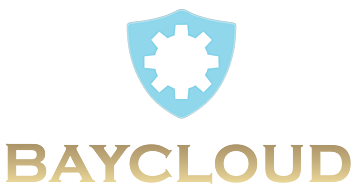4.25
DataGrail Review
Read our in-depth DataGrail review. Discover its security features, automation, pricing, updates, support, and value for money. Find out if it fits your compliance goals!
Comprehensive overview and target audience
DataGrail operates as a specialized privacy platform designed to help organizations manage personal data and comply with global privacy regulations like GDPR and CCPA. Its primary strength lies in automating complex processes related to data subject requests DSRs and data mapping. This automation is central to understanding DataGrail value for money; it reduces manual effort significantly, freeing up valuable internal resources and minimizing compliance risks which translates to cost savings over time.
The platform is particularly well suited for mid market and enterprise level companies handling substantial volumes of consumer data. Key users typically include legal teams, compliance officers, security professionals, and IT departments. These teams benefit from a centralized system that provides visibility and control over personal data across disparate applications and infrastructure. DataGrail aims to simplify the intricate web of data privacy management for organizations facing increasing regulatory scrutiny.
Core capabilities often highlighted include:
- Automated DSR fulfillment across hundreds of integrated systems.
- Continuous data discovery and mapping for accurate inventories.
- Risk monitoring and assessment related to data processing activities.
Regarding DataGrail security features, the platform employs robust measures to protect the sensitive information it processes during DSR workflows and data mapping. Security is fundamental to its operation, ensuring data privacy is maintained throughout the compliance lifecycle. The company consistently works on DataGrail updates and new features, aiming to stay ahead of evolving privacy laws and enhance user experience. These updates often introduce improved integrations, refined automation logic, and expanded regulatory coverage.
Prospective customers often perform a DataGrail pricing comparison with other solutions. While specific costs depend on company size and usage, the platform positions itself as a premium offering focused on deep integration and automation, arguing its efficiency delivers strong returns. Finally, comprehensive DataGrail support and training resources are available. This includes documentation, dedicated customer success managers for eligible tiers, and onboarding assistance to help users maximize the platform’s potential effectively. Support is crucial for navigating the complexities of privacy compliance tools.
User experience and functional capabilities
Delving into DataGrail user experience insights reveals a platform prioritizing clarity and efficiency. The interface is generally regarded as clean and intuitive, designed to simplify complex privacy workflows for technical and non technical users alike. Navigation aims to be straightforward, allowing compliance teams to manage DSRs and view data maps without extensive training. While mastering every nuance takes time, the core functionalities are accessible, making the initial learning curve manageable for most organizations.
Understanding how to use DataGrail effectively centers on its automated processes. Key functional capabilities include:
- Automated DSR Fulfillment: The platform automates the identification, retrieval, and deletion of personal data across integrated systems in response to subject requests. This significantly reduces manual effort.
- Data Mapping: DataGrail continuously discovers and maps personal data across the organization’s tech stack, providing an accurate, live inventory essential for compliance reporting and risk assessment.
- Consent Management Integration: While not its primary focus, it often integrates with consent tools to provide a fuller picture of data processing permissions.
Learning these core functions is supported by documentation and support resources, facilitating user adoption.
The setup process, often detailed in a DataGrail implementation guide, involves connecting the platform to various business systems. Integrating DataGrail with other tools is fundamental to its value proposition. The platform boasts a wide range of pre built connectors for SaaS applications, databases, and infrastructure. This integration network enables comprehensive DSR automation and accurate data mapping. Successful implementation hinges on careful planning and collaboration between IT, legal, and compliance teams to ensure all relevant data sources are connected correctly.
Despite its strengths, users should be aware of potential common problems with DataGrail. These can sometimes include initial setup complexities, particularly for organizations with highly customized or numerous legacy systems. The accuracy of data mapping also depends heavily on the quality of integrations and the completeness of system connections. However, DataGrail actively addresses these challenges through ongoing DataGrail updates and new features, continually expanding its integration library and refining its automation logic. Best practices for using DataGrail involve regular review of connected systems, maintaining open communication between relevant internal teams, and leveraging DataGrail support for complex scenarios. Staying informed about platform updates ensures users benefit from the latest enhancements and maintain robust compliance posture.
Who should be using DataGrail
DataGrail is particularly well suited for mid market and enterprise level organizations. These companies typically manage substantial volumes of personal data and face significant obligations under regulations like GDPR and CCPA. If your business operates across multiple jurisdictions or handles sensitive customer information at scale, DataGrail provides the necessary automation and control to navigate complex compliance requirements effectively. It addresses the challenges of manual data management which often becomes unsustainable and error prone as data volume grows.
The platform delivers significant value to specific internal teams. Key users who benefit most include:
- Legal and Compliance Officers: They gain automated tools for DSR fulfillment and accurate data mapping, reducing manual effort and ensuring regulatory adherence. A common DataGrail use case scenario involves automating responses to hundreds or thousands of data subject requests simultaneously, a task nearly impossible to manage manually.
- IT and Security Professionals: These teams appreciate the platform’s ability to integrate with hundreds of systems, providing a centralized view of personal data across the tech stack. This visibility is crucial for security posture and data governance.
Essentially, any organization struggling with the operational burden of privacy compliance, seeking to minimize risk, and aiming to build customer trust through transparent data practices should consider DataGrail. Companies needing to demonstrate auditable compliance trails and reduce the time spent on data discovery and DSR management will find it especially beneficial. Adhering to Best practices for DataGrail, such as ensuring comprehensive system integration and fostering collaboration between legal, IT, and compliance teams, maximizes the platform’s potential for these users. Proper implementation ensures accurate data inventories and efficient request handling, turning regulatory obligations into manageable processes.
Unique Features offered by DataGrail
DataGrail distinguishes itself through robust customization options and unique features designed for complex privacy management scenarios. While not infinitely configurable like custom built software, it offers significant flexibility in tailoring workflows to specific internal processes. This involves adjusting how Data Subject Requests are routed, verified, and fulfilled across different departments. The platform’s strength lies in adapting its powerful automation engine to an organization’s existing structure, supporting efficiency gains.
Several features make DataGrail stand out: its live data mapping capability provides a continuously updated inventory of personal data across connected systems, a crucial asset for compliance accuracy. The depth and breadth of its automation for DSR fulfillment across hundreds of applications is another defining characteristic. Regarding customization, a key aspect involves selectively activating integrations. Integrating DataGrail with other tools is fundamental; its extensive library of pre built connectors allows businesses to link DataGrail seamlessly with their existing tech stack, from SaaS applications to databases and cloud infrastructure, ensuring comprehensive data visibility and request processing.
This adaptability is central to Customizing DataGrail for business growth. As companies expand their operations, adopt new technologies, or face evolving regulations, DataGrail’s framework allows for scaling privacy operations accordingly by adding new integrations and adjusting processes without requiring a complete overhaul. However, it is important to note these advanced capabilities are primarily geared towards mid market and enterprise level companies with substantial data volumes and complex compliance needs. While powerful, the platform’s scope and associated investment might make DataGrail for small businesses less practical unless they handle exceptionally large datasets or operate in highly regulated sectors requiring sophisticated automation from the outset.
Pain points that DataGrail will help you solve
Managing data privacy in today’s complex regulatory landscape presents significant challenges. Many organizations grapple with the overwhelming burden of manually processing Data Subject Requests DSRs, a process that is not only time consuming but also highly prone to errors. Keeping an accurate, up to date inventory of where personal data resides across countless applications and databases often feels like an impossible task. This lack of visibility and control directly translates into increased compliance risks, potentially leading to hefty fines and damage to customer trust. Furthermore, dedicating valuable legal, compliance, and IT resources to these manual, repetitive tasks drains productivity and diverts focus from strategic initiatives.
DataGrail directly addresses these critical operational headaches. Its core value lies in automating the most cumbersome aspects of privacy management. By leveraging technology, DataGrail alleviates the pressure on your internal teams and significantly reduces the likelihood of costly compliance mistakes. Key problems DataGrail tackles include:
- The immense difficulty and inefficiency of manually locating, retrieving, and deleting personal data across diverse systems to fulfill DSRs accurately and on time.
- The challenge of maintaining a continuous, comprehensive, and accurate map of personal data assets throughout your technology stack, essential for risk assessment and regulatory reporting.
- The persistent risk of non compliance with regulations like GDPR and CCPA due to human error, incomplete data discovery, or slow response times.
- The significant drain on internal resources spent on manual data discovery, request fulfillment, and evidence compilation for audits.
For growing companies, these challenges only intensify. Scaling manual privacy processes is often unsustainable and introduces exponentially higher risks. This is where DataGrail shines, offering solutions adaptable to evolving needs. While considering DataGrail for different businesses sizes, its robust automation is particularly beneficial for mid market and enterprise organizations facing high data volumes and complexity. Customizing DataGrail for business growth involves leveraging its integration capabilities; connecting it effectively ensures the platform scales alongside your operations. Successfully Integrating DataGrail with other tools across your tech stack is fundamental to achieving comprehensive automation and maintaining an accurate data inventory as your business expands.
Ultimately, DataGrail helps transform data privacy compliance from a resource intensive burden into a streamlined, automated function. By solving these common pain points, it enables businesses to operate more efficiently, mitigate compliance risks effectively, and build stronger trust with their customers through transparent and responsible data management practices.
Scalability for business growth
As businesses expand, the volume and complexity of personal data they manage invariably increase. Manual approaches to privacy compliance, already burdensome for smaller operations, become completely unsustainable during periods of growth. This exponential rise in data subject requests, new software integrations, and evolving regulatory requirements demands a solution designed explicitly for scaling. DataGrail addresses this fundamental need, providing a platform built to grow alongside your organization, ensuring compliance doesnt become an obstacle to expansion.
The platforms scalability stems from its core architecture and automation capabilities. DataGrail is engineered to handle increasing numbers of DSRs and integrate with a continually expanding tech stack without a proportional increase in manual effort. Its extensive library of connectors allows businesses to seamlessly add new applications, databases, and infrastructure as they are adopted, maintaining a comprehensive and accurate data map. This ability to integrate new systems easily is crucial; it means privacy operations can keep pace with technological evolution and business diversification. The automation engine efficiently processes growing request volumes, preventing compliance backlogs and freeing up internal teams to focus on strategic growth initiatives rather than repetitive tasks.
Furthermore, the platforms adaptability supports this scaling journey. Effectively Customizing DataGrail for business growth involves configuring workflows and integrations to match evolving operational needs. This is not just about adding connections; its about ensuring the platforms processes align with new internal structures or compliance requirements introduced by market expansion or new regulations. Thinking ahead and Customizing DataGrail for business scalability ensures the privacy framework remains robust and efficient, supporting long term development rather than hindering it. This proactive approach transforms privacy compliance from a reactive necessity into a managed, scalable function that supports sustainable business growth and maintains customer trust even amidst rapid expansion.
Final Verdict about DataGrail
After reviewing its capabilities, integrations, and user focus, DataGrail emerges as a formidable platform specifically engineered for modern data privacy challenges. Its core strength lies undeniably in its powerful automation engine, designed to tackle the often overwhelming tasks of Data Subject Request fulfillment and continuous data mapping across complex technology ecosystems. For organizations drowning in manual processes and facing stringent regulations like GDPR and CCPA, DataGrail offers a significant lifeline, directly addressing critical pain points related to operational inefficiency and compliance risk.
The platform is particularly well suited for mid market and enterprise level companies managing substantial data volumes. Its extensive library of pre built integrations provides the necessary connectivity to gain comprehensive visibility and control over personal data scattered across hundreds of applications and systems. This focus on deep integration, combined with robust automation, delivers tangible benefits: reduced manual labor, enhanced accuracy in compliance reporting, and the scalability required to support business growth without compromising privacy obligations. It effectively transforms a resource intensive burden into a streamlined, manageable function.
While the user experience is generally clean and aims for intuitive navigation, the initial setup and integration process can present complexities, especially for organizations with highly customized or numerous legacy systems. However, the potential return on investment, realized through significant time savings, reduced risk exposure, and strengthened customer trust, positions DataGrail as a compelling solution for its target audience. The platform is clearly built for organizations ready to make a serious commitment to automated privacy compliance.
Our final verdict on DataGrail is clear: it represents a sophisticated and highly effective solution for businesses seeking comprehensive automation for DSR management and data mapping. If your organization fits the profile, grappling with high data volumes and complex compliance needs, DataGrail stands out as a leading contender capable of delivering substantial operational efficiencies and enhanced regulatory peace of mind.
Advantage
Disadvantage
Automates data subject request fulfillment
Integrates seamlessly with hundreds of applications
Live data mapping discovers personal data accurately
Streamlines global privacy law compliance efforts
Reduces manual workload and potential human error
Disadvantage
Higher cost may challenge smaller budgets
Implementation can require significant technical resources
Integration gaps possible for less common tools
Steep learning curve for some platform features
Limited customization for highly specific workflows
Rating
Product Support
Web Based
Windows
Mac OS
Linux
Android
iOS
Phone Support
Email/Help Desk
AI Chat Bot
Live Support
24/7 Support
Forum & Community
Knowledge Base
Live Online
Documentation
Videos
In Person
Webinars
Company: DataGrail
Email: sales@datagrail.io
Address:
598 Brannan Street, San Francisco, CA 94107, USAPhone: (415) 919-7561
Implementation
Web Based
Windows
Mac OS
Linux
Android
iOS
Support
Phone Support
Email/Help Desk
AI Chat Bot
Live Support
24/7 Support
Forum & Community
Knowledge Base
Training
Live Online
Documentation
Videos
In Person
Webinars
Group text
Company: DataGrail
Email: sales@datagrail.io
Address:
598 Brannan Street, San Francisco, CA 94107, USA
Phone: (415) 919-7561
Alternative Products
Frequently Asked Questions
Is DataGrail worth it?
For businesses prioritizing robust data privacy compliance and operational efficiency, DataGrail often represents a strong value proposition by significantly reducing manual effort, mitigating compliance risks, and automating complex processes associated with regulations like GDPR and CCPA/CPRA.
How can DataGrail help me?
DataGrail can help your organization by automating the discovery and mapping of personal data across diverse systems, streamlining the fulfillment of Data Subject Requests (DSRs) like access and deletion, managing consent, and providing risk intelligence to proactively address privacy vulnerabilities.
What specific privacy problems does DataGrail solve?
DataGrail specifically tackles the challenges of accurately locating all personal data tied to an individual across hundreds of potential applications (data discovery), fulfilling DSRs within mandated timelines without manual drudgery, maintaining an up-to-date data inventory (data mapping), managing user consent preferences consistently, and identifying potential privacy risks within your data ecosystem.
What are DataGrail's standout features?
Standout features include its extensive library of pre-built connectors (over 2,000+), enabling seamless integration with a vast array of SaaS applications, databases, and infrastructure; its “Live Data Map” which dynamically updates your data inventory; fully automated DSR fulfillment workflows; and integrated Risk Intelligence for assessing vendor and system risks.
Who is DataGrail best suited for?
DataGrail is best suited for mid-market to enterprise companies, particularly those with complex tech stacks, significant volumes of personal data (especially customer data), and a need to comply with multiple privacy regulations efficiently, often appealing to legal, compliance, and security teams in tech-forward organizations.
How easy is DataGrail to implement and use?
DataGrail is generally regarded as relatively easy to implement and use, especially compared to manual processes or less integrated platforms; its strength lies in its numerous pre-built integrations which simplify connecting systems, and its user interface is designed for clarity in managing DSRs and viewing the data map, although initial setup still requires configuration and coordination.
What is the pricing structure for DataGrail?
DataGrail utilizes a subscription-based pricing model, typically tiered based on factors such as the number of integrations connected, the volume of data subject requests processed, company size, and the specific modules required (e.g., DSR Management, Data Mapping, Consent); prospective customers usually need to request a custom quote tailored to their specific needs.
How does DataGrail compare to its main competitors?
Compared to competitors, DataGrail often differentiates itself with the breadth and depth of its integration network, leading to highly automated data discovery and DSR fulfillment; while some larger GRC platforms might offer a wider array of compliance modules, DataGrail excels in its focused, integration-powered approach to core data privacy management tasks, often perceived as more streamlined for these specific functions.








